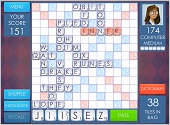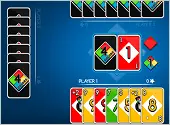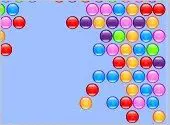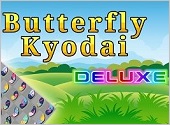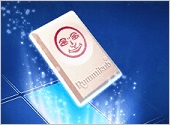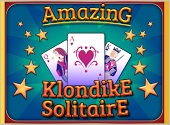- Home
- Better Memory
- Memory Systems
- Mental Images
6 Tips to Create Effective Mental Images
A visitor named Frank recently posed a great question about memory techniques that use mental images. He's worried that his mental images take too long to create or aren't good enough to help his memory.
Image-based memory systems like the Link Method and Peg Method create a second mental pathway for recalling information you want to remember. These techniques are quite effective.
But suppose imagination and free association aren't your strong suits. What tips would I suggest for quickly creating better, more effecive memorable images from raw information?
Below I answer his question with examples of 6 different approaches you can use.
Here is Frank's question: "Many (most?) mnemonic techniques involve making visual images to link names or words to pictures. This tends to be key.
"Yet, I don't think I'm particularly good at that. Sometimes I can go from a word or phrase to an image fairly quickly. Often, I don't come up with anything that feels compelling and like it has the potential to last.
"Do you have any tips for how to get better at that? I suppose people who have stronger abilities at free association are better at this. But that's not one of my strengths."
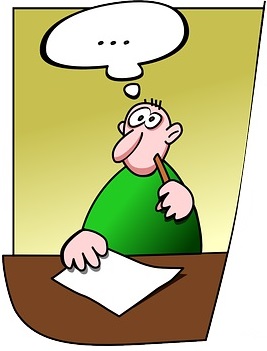
Sometimes it's hard to think of a good image
It's clear Frank understands the value of using his visual imagination when memorizing. But it's not going smoothly for him.
In the past I, too, struggled with this. However, I have reached the point now where I can pretty much create a mental image for any concrete or abstract concept on the fly. It can be done.
Of course, I have to mention practice. The more you practice, the better you should get at quickly generating a mental picture that represents the facts you want to remember.
The image-based memory techniques are powerful and have been used throughout history, so don't give up on them too soon. Master them, and you'll reap the benefits the rest of your life.
But beyond practice, there's a big misconception that trips up a lot of people. It is simply this: You don't need to be super-exact with the images.
This is an assumption. People think the image must exactly correspond to the information they want to remember. Not the case.
The fact is your true memory will easily recognize the difference between the image hook and the actual information you are trying to retrieve from memory in the vast majority of cases.
To illustrate, I've provided several examples below from my own life. These mental images helped me memorize the facts and retain them in long-term memory. They were quick and fun to think of.
Use Whichever Approach Works for You
The goal of mental images is to create a mental hook that acts as a reminder for the information you want to remember. So you can twist the image around in whatever way may work for you.
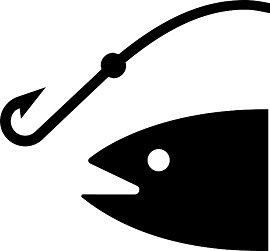
A clever mental image acts as a memory hook
There isn't one best way to create an effective mental image. You just need to make sure whatever image you do think of is funny, unlikely, weird, or impossible.
That's because the mind remembers the unusual. We forget the ordinary.
In terms of thinking of an image, feel free to use parts of the word or phrase. Or go with the sounds of the syllables.
If convenient, imagine replacement images that, to you, represent the word.
Your true memory knows the real information. Your brain just needs a little hook to grab onto!
Rehearse your image the the actual details it represents a few times to make sure the image reminds you of the exact word or phrase. Then you're good.
Following are examples of mental images I created to help me remember various information in my own life. Each example represents a different approach.
TIP 1: Use Direct Replacement Images
This morning I ordered some brake pads for my bike online. The pads are sold by
Kool-Stop, a brand name which I would like to remember.
So I imagined frozen dripping icicles hanging from the brake pads of my bike. They are dripping on a bright red stop sign my bike is parked on.
The icicles remind me of "Kool". The stop sign of "Stop". Kool Stop.
That's all I need for that. I know I won't forget it, because if I do, the strange icicle image will pop into my mind to remind me.
TIP 2: Sounds Like Something You Already Know
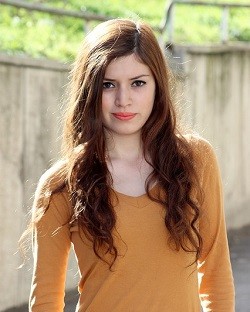
La mujer = "more hair" = woman
Sometimes the word sounds like another word or phrase you can use as a mental image.
I just started learning Spanish. The word for "woman" is la mujer, pronounced "moo hare".
Always think about and listen carefully to how the word or phrase sounds. Even if you're not dealing with a foreign language, read it out loud.
I noticed "moo hare" sounds like "more hair".
Generally a woman has more hair on her head than a man. So "la mujer" means woman.
That's all I need for that Spanish vocabulary word.
My true memory won't think it's Chinese or some other language. I just know, because Spanish is what I'm studying.
TIP 3: Include a Symbol to Represent Subject Matter
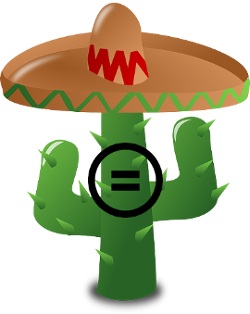
Cactus = el cactus
Throw in a symbol image to pigeon hole words in categories.
When I think Spanish, I think salsa, burritos, beans and rice, and sombrero hats.
So if I wanted, I could in include a sombrero hat in the mnemonic images for Spanish words. Put one on the woman. Put one on the baby. Etc.
Use familiar symbols freely in your images. For example, I recently learned the word for "cactus" is the same in English and Spanish.
To remember this, I could imagine a desert full of cactuses wearning sombreros, with a giant equal sign on their trunks.
The sombrero reminds me it's a Spanish vocabulary word. The equal sign reminds me the word is the same in English as Spanish (although pronounced differently, of course).
TIP 4: Looks Like a Different Word You Already Know
Or maybe what you want to remember looks like another word.
The Spanish verb "beber" means to drink. Conjugated third person singular (as in she drinks), it's "bebe".
For instance, La mujer bebe agua. The woman drinks water.
To me, bebe looks like baby. So I imagine a gigantic baby drinking a glass of water as tall as a building.
It's enough. Ask me the verb "to drink" in Spanish, I'll recall the giant drinking baby. Oh, yes, "bebe".
TIP 5: Who Does It Remind You Of?
For names, use people or pets you know or movie stars.
I went biking yesterday at a new trail. On of the loops of the bike trail had a name with the word "Michael" in it.
One of my neighbors has an old, blind dog named Michael.
So I imagined Michael the dog walking round and round the loop of that bike trail. Now when I think of that trail, I see dog Michael in my mind's eye.
The dog reminds me of the true name of the trail loop. That's all I need to retrieve the memory.
TIP 6: Sound of the Syllables
Use the sound of the syllables for abstracts. And you don't have to be exact about it.
Fredonia Mountain is a fabulous mountain community in Tennessee, north of Chattanooga. I visited recently and wanted to remember the name.
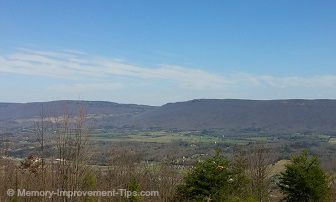
Fredonia Mountain, Sequatchie Valley, Tennessee
"Fredonia" (pronounced "free doe knee a") sounds to me roughly like "free donuts". So I picture a shiny lit-up donut shop at the top of the mountain.
That's all I need. Really.
Fredonia Mountain sits in the gorgeous Sequatchie Valley.
"Sequatchie" sound like Sasquatch (Bigfoot) to me.
I clearly recall admiring the valley from the top of Fredonia Mountain. It's a beautiful view.
I envision a giant Bigfoot creature strolling down that valley, from one end to the other. Perhaps even eating a free donut!
When someone asks me the name of that mountain, which has happened a couple times when I told them I visited an amazing community off the beaten path, the free donuts and the Bigfoots (Bigfeet?) pop right into my mind.
Free donuts. Fredonia Mountain.
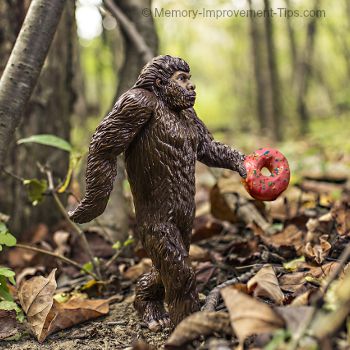
Mental image of BigFoot (Sasquatch) with Free Donut reminds
me of the name of Fredonia Mtn, Sequatchie Valley, TN
Bigfoot equals Sasquatch. Sequatchie Valley.
My true memory knows it's not Free Donuts Mountain. That would be silly. I rehearsed the mountain's right name at the time I created the mental image.
Free Donuts is just the hook that helps me fish out "Fredonia" from my long-term memory.
My true memory knows it's not Bigfoot Valley. I rehearsed the right name of the valley a few times, at the moment I created the memory image, to make sure I got it.
The crazy Bigfoot image is just the hook the helps me fish out Sasquatch and then Sequatchie from my long-term memory.
Each time I recall any of these images and their associated fact, the true memory is strengthened, by the way. Eventually the bizarre mental images won't be needed.
They will drop away from your mind. The memorized information will remain.
Fredonia and Sequatchie will just come to mind. Memory trick no longer needed for those facts.
If you reach the point where you can create memorable images well, but find yourself tending to forget them later, do some periodic review.
Periodic review is also known as spaced repetition. Reviewing information every few days, weeks, or months greatly strengthens the memory trace. It deepens the neural network for that memory.
I hope these examples inspire you to think very creatively when creating your mental images. Be sure to make them crazy, unusual, and bizarre. And therefore memorable!
Published: 08/10/2015
Last Updated: 06/11/2020
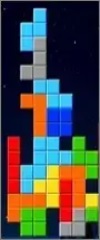
Newest / Popular
Multiplayer
Board Games
Card & Tile
Concentration
Math / Memory
Puzzles A-M
Puzzles N-Z
Time Mgmt
Word Games
- Retro Flash -
Also:
Bubble Pop
• Solitaire
• Tetris
Checkers
• Mahjong Tiles
•Typing
No sign-up or log-in needed. Just go to a game page and start playing! ![]()
Free Printable Puzzles:
Sudoku • Crosswords • Word Search

